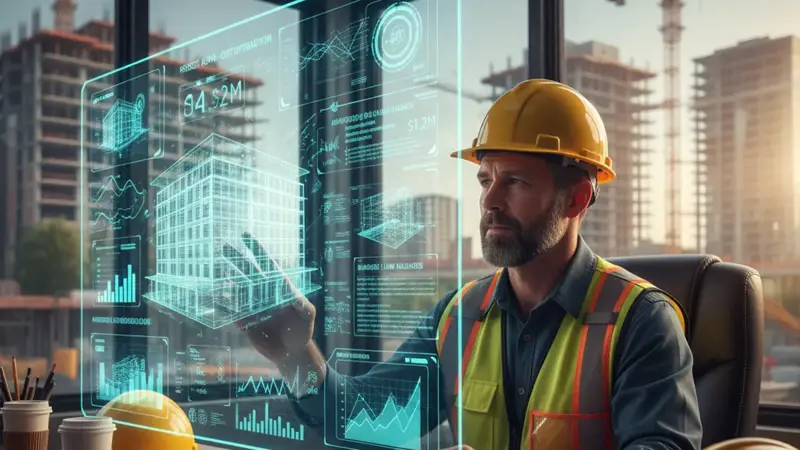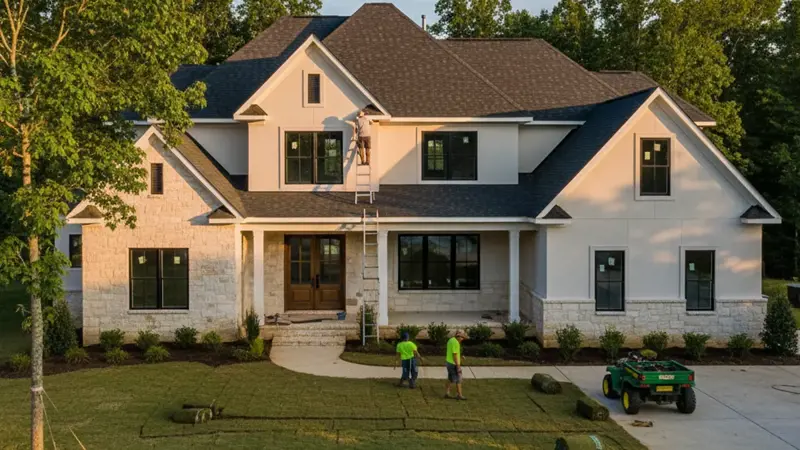Professionals in the construction industry know that mastering the art of accurate estimation goes beyond a basic use of a building construction cost calculator. It requires basic knowledge of navigating challenges, utilizing proper tools, and anticipating future market trends.
In this guide, we will discuss some secrets and "tricks of the trade" for precise cost estimation, enabling you to enhance and control your budget effectively.
The Impact of Inflation and Market Fluctuations on Cost Estimation: Managing Volatility Risks
Even experienced contractors have struggled with the unpredictability of inflation and market shifts, such as rising material costs or labor shortages, which have significantly impacted their estimated budget. Steel prices have increased by 3.15% since the beginning of 2025. This number may not seem significant; however, in large-scale projects where tons of steel are required, it can result in a substantial budget overrun. Here are some tricks to predict and manage inflation and market shifts:
- Apply a volatility premium buffer: instead of aggregating upon a fixed price as a buffer, use a flexible one based on specific economic factors, such as construction material prices or market trends, to manage unexpected price fluctuations.
- Agree upon a fixed price for materials: you can discuss with suppliers and negotiate a fixed price for the materials during the construction period; this way, market fluctuations will not affect your estimated budget.
- Hedging strategies: If storage is not a problem, you can buy the materials in advance and store them.
- Consider every scenario: don’t just think about the best, worst, and average results; think of each scenario as a probability and prepare to face each one; that's not pessimism, it's realism.
- Monitor market trends: seek help from the community by reviewing their reports and analyzing current market trends.
Cost Estimation for Green and Sustainable Projects: Differences and Benefits
Green constructions, such as LEED-certified buildings or net-zero homes, aren’t just about being environmentally responsible; they are distinct financial models that prioritize energy efficiency and eco-friendly materials. Although the initial cost might seem high, the long-term benefits of these projects offer a compelling economic case. This project will require additional examination and estimation to determine the quantity of these long-term benefits. Key considerations are mentioned below:
- Special materials: Unlike ordinary building projects, this project requires eco-friendly materials, such as low-VOC paints or recycled steel, which may cost 10-20% more.
- Energy systems: You can use solar panels or heat pumps, which initially increase the cost, but later reduce energy bills.
- Perform a Full Lifecycle Cost Analysis (LCCA): don’t just calculate the initial cost of the project; through professional estimation, examine the long-term effects of these buildings, from reduced energy and lower maintenance costs to a longer asset lifespan.
- Include Incentive and Rebate Tracking in Your Cost Model: Governments and utility companies sometimes offer grants, tax credits, and rebates for sustainable construction.
- Grand permits and optimizes the design: in green projects, in addition to the costs related to LEED and BREEAM, you must also consider the costs for green building certifications, which can include documentation, commissioning, and a higher design fee.
- Insurance Premium Reductions: Some insurers, as part of their green policy, offer reduced premiums for green and sustainable buildings. So, explore these potential savings.
Take this example:
A 1500-square-foot net-zero home in Austin that uses solar panels, high-efficiency insulation, and recycled materials. The estimated cost for this project is $180,000 to $250,000. But you will save $1,500 per year in energy costs and $7,500 in tax credits.
The Role of AI and Big Data in Cost Estimation: The Future of Cost Estimation
By using revolutionary technologies like AI and big data, the accuracy of cost estimation has improved by 15-20% compared to traditional methods. They analyze vast datasets to improve the prediction of costs, identify risks, and optimize budgets.
Key considerations for using AI and Big Data:
- Data Integration: AI uses large historical project data, market trends, and regional factors for precise estimations.
- Predictive Analytics: AI tools can serve as a project coordinator for construction, predicting potential cost overruns before they occur.
- Software Costs: Getting a professional AI tool can cost somewhere between $50 and $500 per month based on the features they offer.
- AI specialist: These tools are a lifesaver, but using them effectively to maximize the accuracy of estimating will require training and skilled workers, which can cost $1,000 to $5,000 per staff member.
AI tools can predict potential errors that human estimators might miss, thereby avoiding any delays or budget overruns. Machine learning can also help us detect any variances in real time and enable rapid correction. Another advantage of these technologies is that they can accurately predict future trends and prices to some extent, thereby reducing financial risks
The Importance of Sensitivity Analysis in Cost Estimation: Exploring Different Scenarios
Sensitivity analysis is a powerful tool for construction cost estimation, enabling you to predict how changes in variables such as material costs, labor, or scope can impact your estimated budget. You can model multiple scenarios and be prepared for any potential outcome. By doing so, any financial risk will be eliminated.
To implement sensitivity analysis, focus on high-impact variables, such as materials that consume 30% to 50% of your total budget. By using a “What if” technique, you can simulate scenarios and get ready to manage them if they happen in real life. There are tools available to assist you with this task.
Here is how to use this approach:
- Model impact drivers: instead of just individual items, examine how major factors affect all affected costs
- Use probabilistic modeling: don’t just play with guesses, use tools to assign probability distributions and then run Monte Carlo simulations for any potential result.
- Perform Reverse Analysis: start with your target budget and then work backward to see how much each cost component can increase without exceeding the total budget.
- Run Extreme Stress Tests: deliberately push your highest risks to the worst-case values to identify "breaking points" and prepare for worst scenarios.
Case Studies of Cost Estimation and Control in Real-World Projects: Lessons from Successful Projects
Here is a table showing the details of a 3,000-square-foot commercial office project in Denver, showing how effective estimation can control the project budget:
As you witnessed, many factors need to be taken into consideration. For more information and guidance on how to obtain a precise estimate for your next project, it is recommended to read “The Ultimate Guide to Construction Cost Estimation " on the 247pro website.


